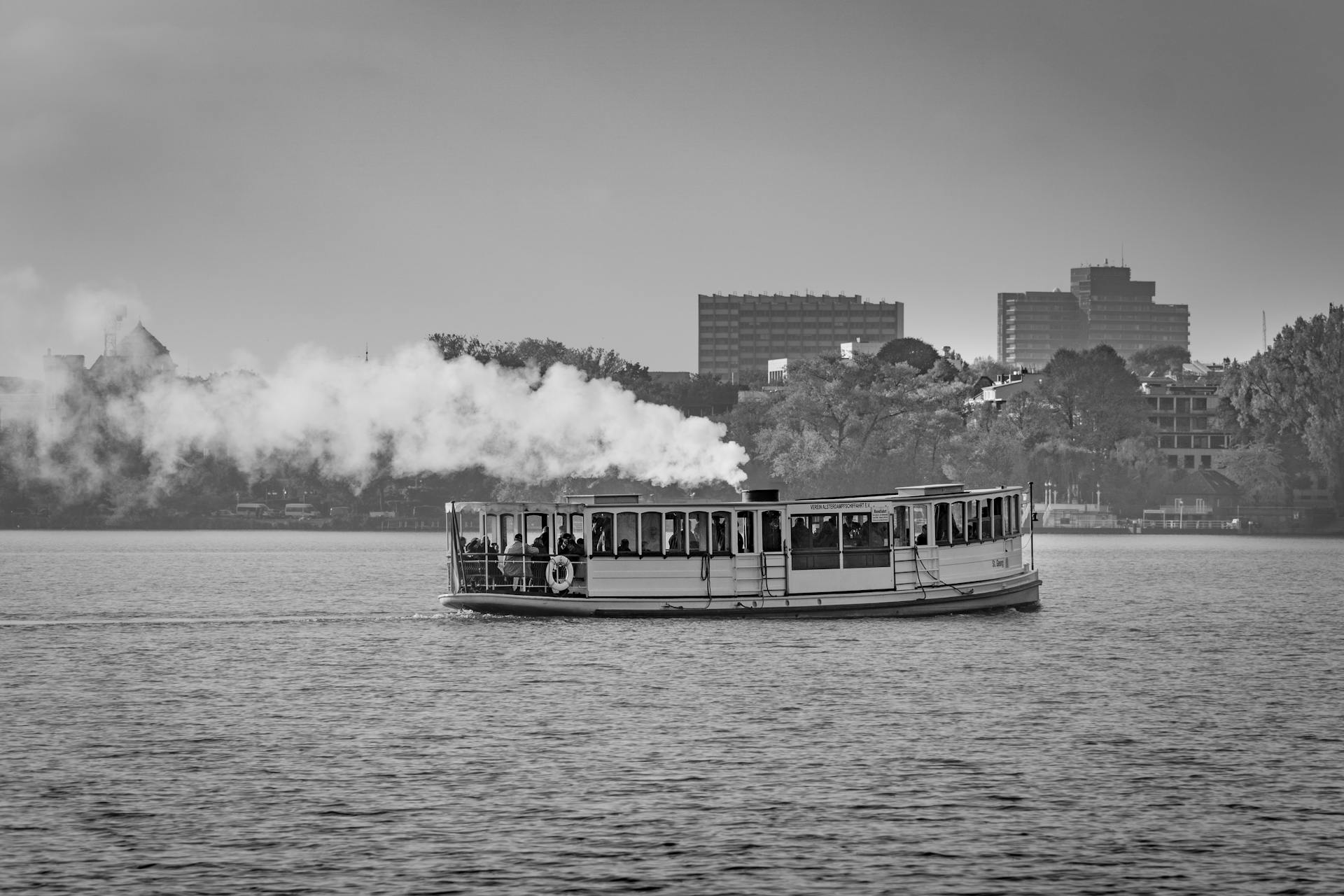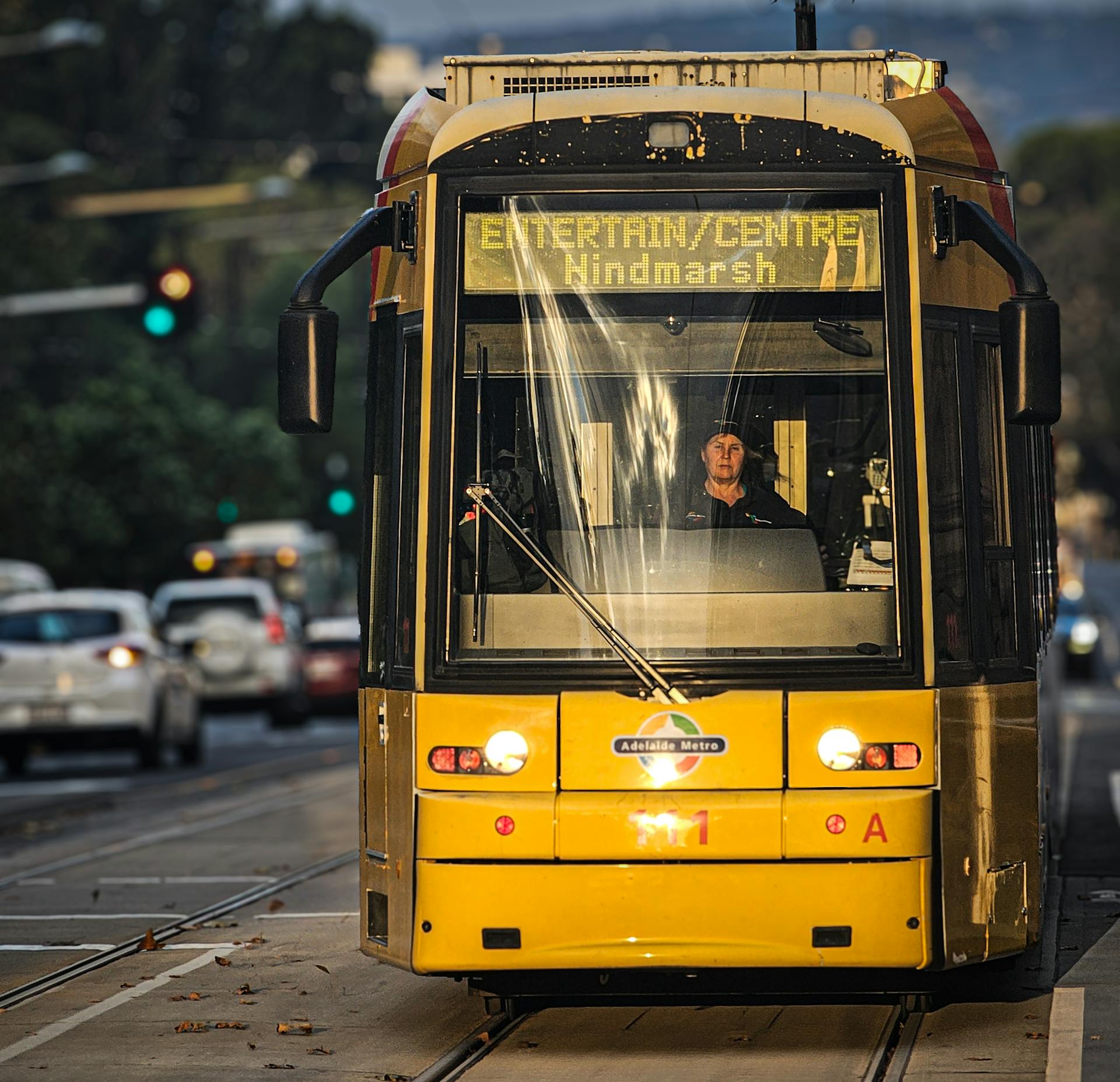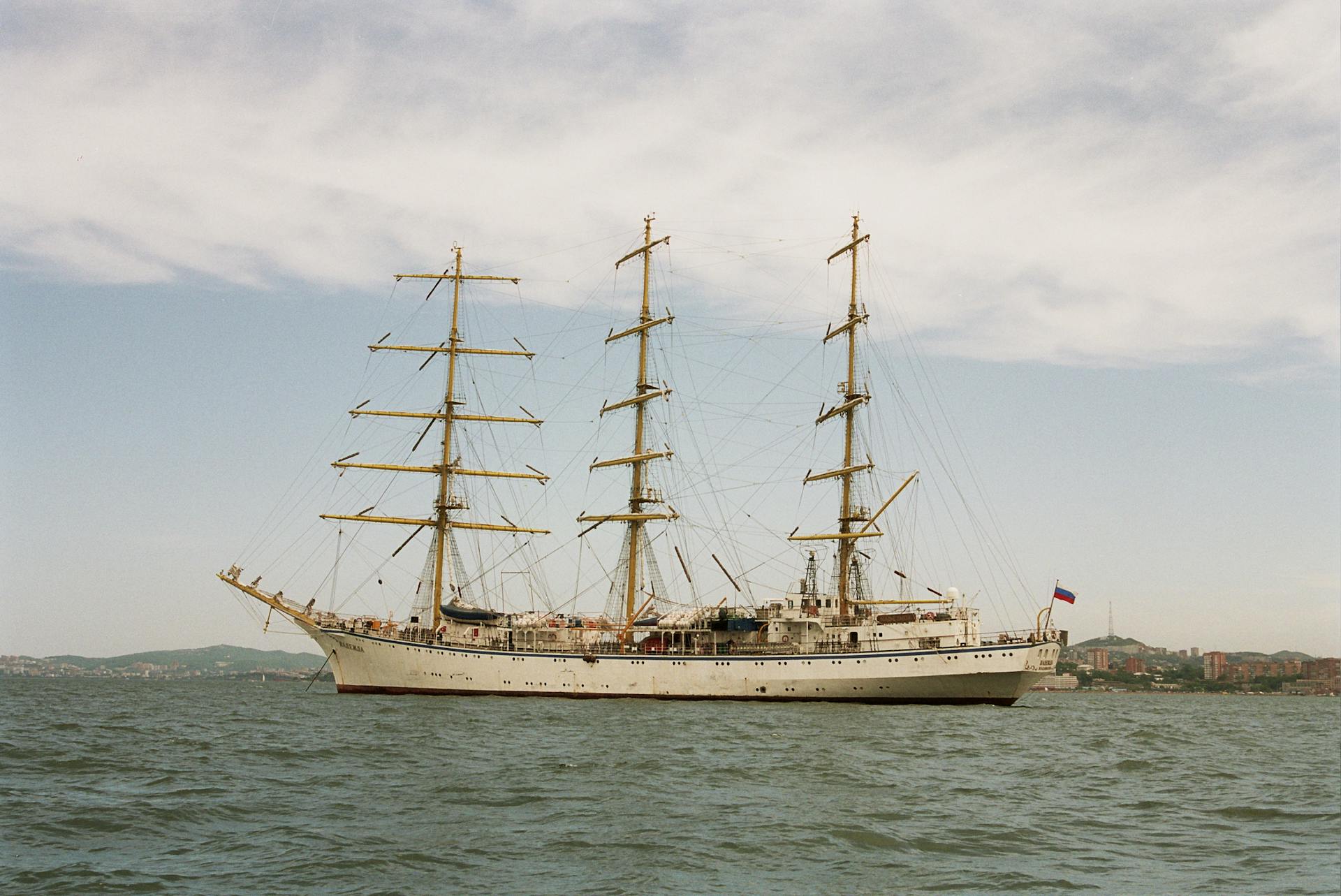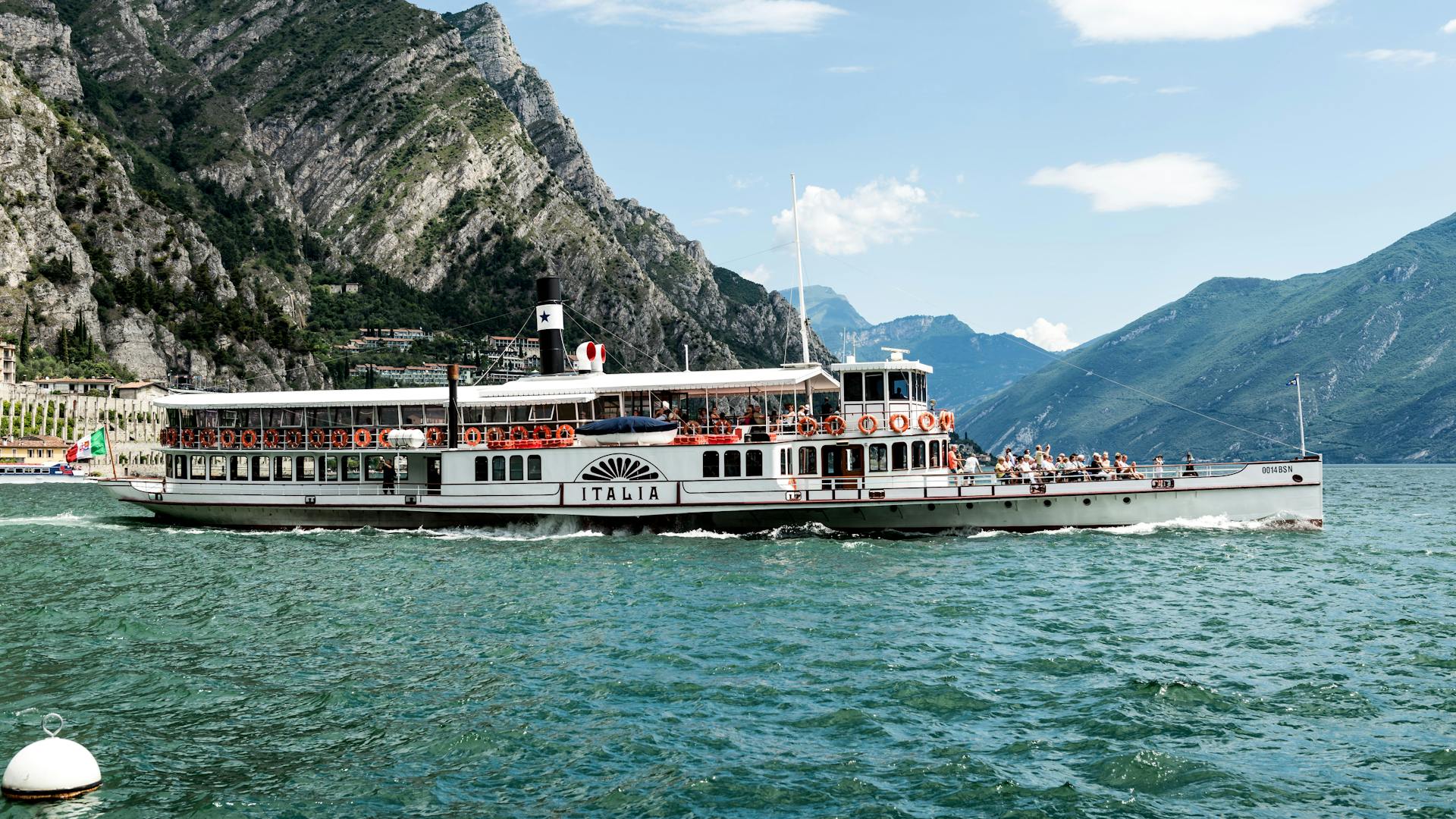
The Adelaide Steamship Company has a rich history that spans over a century. It was founded in 1875 by a group of entrepreneurs who saw an opportunity to transport goods and people across the Australian coast.
The company's early days were marked by humble beginnings, with a small fleet of ships and a limited route network. However, they quickly expanded their operations to include routes to New Zealand and other parts of the Pacific.
Their growth was fueled by the discovery of gold in Western Australia in the late 19th century, which led to a surge in demand for transportation services.
Readers also liked: Century Cruises
Company Overview
The Adelaide Steamship Company was formed in September 1875 in Adelaide, South Australia, by a group of pastoralists and businessmen.
Its founders, including Andrew Tennant, Robert Barr Smith, and Thomas Elder of Elder Smith & Co Ltd, had already had experience with steamship interests in the Spencer Gulf.
The company's first ship was Flinders, and by July 1876, the company's leading promoters had amalgamated their private ship-owning interests to form the Spencer's Gulf Steamship Co Ltd.
For more insights, see: Gulf Gateway Deepwater Port

The Adelaide Steamship Company's fleet eventually circled the coast from Derby in northern Western Australia to Cairns in northern Queensland.
During World War I, several of the company's ships were requisitioned for use as hospital ships, troopships, and other military purposes.
The company was liquidated and reconstructed twice for more efficient and profitable operation, first in 1900 and subsequently in 1920.
By the start of World War II, the company owned 30 ships, which were later reduced to 21 after nine ships were surrendered to the Navy.
The company's involvement in World War II was significant, with one of its ships, Manunda, playing a key role in evacuating casualties from Darwin harbour to Fremantle after the Japanese bombing.
During the war, Manunda also carried about 30,000 sick and wounded soldiers back to Australia from the Middle East and New Guinea.
The company continued to diversify after the war, acquiring interests in towage, shipbuilding, and the shipping of salt, coal, and sugar.
In 1964, the company merged its interstate fleet with that of McIlwraith, McEacharn & Co to form a new company, Associated Steamships Limited.
For your interest: Irish Mercantile Marine during World War II
History and Timeline

The Adelaide Steamship Company has a rich history dating back to 1875 when it was formed in September of that year. The company was incorporated on October 8, 1875.
The company's early years were marked by significant events, including the amalgamation with Spencer's Gulf Steamship Co Ltd in 1882, and the acquisition of William Whinham's business that same year. This acquisition brought three additional steamships to the company's fleet.
Here's a brief timeline of the company's early years:
- 1875: Company formed in September, incorporated on October 8
- 1875: First ship, Flinders, arrives in Adelaide
- 1882: Amalgamated with Spencer's Gulf Steamship Co Ltd
- 1882: Bought out William Whinham
- 1883: Bought out Anderson & Marshall
Beginnings
The Adelaide Steamship Company, or ASC, was founded in 1875, with Captain Alexander McCoy conceiving the idea for a new steamship company on the Adelaide to Melbourne run. He was joined by other Adelaide businessmen who agreed to float shares for the company.
The first ship of the new company was the Flinders, a 521-ton vessel built in Sunderland in 1874. It arrived in Adelaide in March 1875 and had originally been built for the Spencer's Gulf Steamship Company.

The Flinders was later placed back into the Spencer Gulf trade, but in 1882, the Spencer's Gulf SS Company amalgamated with ASC, giving the latter control of the Flinders and another new steamer, the Franklin.
Here are the key players involved in the early days of ASC:
ASC's early years were marked by a rate war with McMeckan Blackwood, but a deal was eventually struck, allowing both companies to operate on the Adelaide to Melbourne run.
Timeline
The Adelaide Steamship Company has a rich and complex history that spans over 140 years. The company was formed in September 1875 and incorporated on October 8 of the same year.
Here's a brief timeline of the company's major milestones:
- 1875: Company formed and incorporated
- 1882: Amalgamated with Spencer's Gulf Steamship Co Ltd and bought out William Whinham
- 1883: Bought out Anderson & Marshall
- 1887: Locked out members of the Captains & Officers' Society when it sought to affiliate with the Maritime Labour Council
- 1900: Liquidated and reconstructed
- 1903: Adelaide building at 17 Currie Street constructed
- 1904: Adelaide Steamship Company building constructed in Melbourne
- 1911: SS Yongala lost without trace, but discovered in 1958
- 1912: SS Koombana lost without trace
- 1914-1918: Several ships were requisitioned during World War I
- 1920: Liquidated and reconstructed, and involved in a significant court case, Amalgamated Society of Engineers v Adelaide Steamship Co Ltd (The Engineers' Case)
- 1933: First John Martin's Christmas Pageant held
- 1935: Formed Adelaide Airways Limited
- 1936: Purchased West Australian Airways and merged with Holyman's Airways to form Australian National Airways
- 1939: Currie St (Adelaide) building changed significantly
- 1939-1945: Several ships were requisitioned during World War II
- 1940s: Diversified into towage, shipbuilding, and the shipping of salt, coal and sugar
- 1957: Sold Australian National Airways to Ansett Transport Industries
- 1964: Interstate fleet merged with McIlwraith, McEacharn & Co to form Associated Steamship Limited, and the world's first purpose-built container ship was constructed
- 1965: Acquired 40% interest in Bulkships
- 1968: Coast Steamships Limited no longer retained its own identity, and Bulkships acquired Associated Steamship Limited
- 1976: Tooth & Co acquired Penfolds
- 1977: Bulkships sold, and the company ceased connection with ship owning and operating
- 1980: Acquired a substantial interest in David Jones Limited, and the Adelaide Steamship Company building in Melbourne was destroyed
- 1981: Acquired Tooth & Co (via David Jones (Properties) Pty Ltd), Georges (via David Jones), and Buckley & Nunn (via David Jones)
- 1983: Sold Tooth & Co brewing interests to Carlton & United Breweries
- 1985: Acquired John Martins
- 1986: Currie Street building demolished to make way for the State Bank Building, completed in 1988 (as of 2023, RAA Tower)
- 1989: Industrial Equity Limited purchased from Brierley Investments
- 1990: Wine interests sold to South Australian Brewing Company, and share price crash
- 1991: Adsteam commenced liquidation of assets, and National Foods floated
- 1993: Woolworths floated, and Adsteam Marine created as the last remaining operational division of Adelaide Steamship Company
- 1994: The Australian Taxation Office ruled to disallow IEL $524m of deductions regarding the Woolworth float, and "Adelaide Steamship Company (via ASIC) vs former Adsteam directors and auditors" commenced
- 1995: David Jones floated
- 1997: Adelaide Steamship Company renamed Residual Assco Group, and Adsteam Marine floated
- 1999: Liquidation of assets completed – Residual Assco Limited delisted – "Residual Assco has no operating businesses but remains active while several IEL tax disputes wind their way through the courts."
- 2000: "Residual Assco (via ASIC) vs former AdSteam directors and auditors" reached settlement
- 2001: Adsteam Marine acquired tug operations of Howard Smith Limited for A$500m
- 2006: Adsteam Marine acquired by AP Moeller-Maersk
- 2007: Residual Assco's annual report notes that the group holds $429 million "on deposit pending resolution of the outstanding matters between IEL and the ATO", and IEL given leave to challenge the ATO ruling.
The Engineers' Case
The Engineers' Case was a landmark Australian court case decided in the High Court of Australia on 31 August 1920.
This case is widely regarded as one of the most important cases ever decided by the High Court of Australia, for it swept away the earlier doctrines of implied intergovernmental immunities and reserved State powers.

The Engineers' Case firmly established the modern basis for the legal understanding of federalism in Australia and Australian constitutional law.
In essence, this meant that decisions of the Commonwealth Conciliation and Arbitration Court were binding on State governments.
The constitution is no longer read in a way which attempts to preserve the power of the states.
ASIC vs Former Adsteam Leaders and Auditors
In 1994, ASIC launched a lawsuit against the former directors and auditors of Adsteam, which would drag on for six years.
The litigation was initiated by ASIC under section 50 of the ASC Law, in the name of the Adelaide Steamship Company, later renamed Residual Assco in 1997.
The core allegation was that the company's accounts had overstated profits and failed to accurately record its investments in four subsidiary companies, resulting in unpaid dividends.
The proceedings involved numerous key decisions and regulatory outcomes.
Here are some of the notable outcomes:
- Clarke, Frank and Graeme Dean published a book titled "Indecent Disclosure: Gilding the Corporate Lily" in 2007.
- The Government of South Australia, Auditor-General's Department, released a report on the State Bank of South Australia in 1993, which included a case study on the Adsteam Group.
Operations and Expansion
The Adelaide Steamship Company's operations and expansion were a significant part of its history. The company's fleet grew rapidly, with over 30 ships owned and operated by the time of World War II.
In the early 20th century, the company expanded its trade to the West Coast, competing with the existing West Coast Shipping Company. This led to a "war" between the two companies, with the Adelaide Steamship Company eventually emerging victorious by buying out the Gulf Steamship Company in 1913.
The company's fleet was a mix of old and new ships, with many vessels being requisitioned or sold during World War I. By the end of the war, the company controlled most of the powered shipping trade in South Australia.
Here's a list of some of the company's notable ships:
The company's expansion continued after World War I, with the acquisition of new ships and the establishment of new routes.
Featured Images: pexels.com


